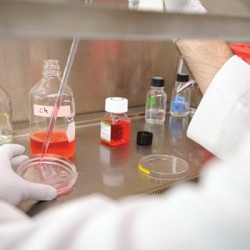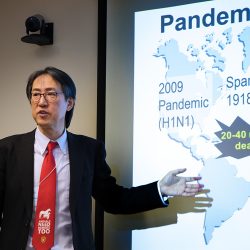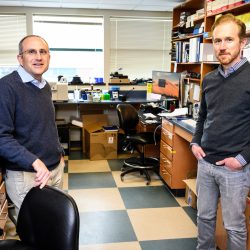Weighing the Issues
Controversial flu research pauses for sixty days.
Concern about influenza research performed on ferrets at UW–Madison and in Holland led to an almost unprecedented sixty-day pause in research in January, allowing international scientists to weigh benefits versus risks and identify the best path forward.
The two studies have explored genetic changes that would enable avian flu to spread in mammals. Public health officials and scientists have been closely watching the influenza virus, which is capable of rapid genetic change. H5N1 flu has been circulating among birds since 1997; in the 578 documented human cases, of which nearly 60 percent were fatal, most victims were infected via direct contact with birds. Person-to-person transmission has not been observed.
One of the two studies now on hold was directed by Yoshihiro Kawaoka, a UW professor of pathobiological sciences in the School of Veterinary Medicine, with funding from the National Institutes of Health. For more than ten years, Kawaoka has done groundbreaking influenza work; this project was intended to identify whether genetic changes that occur in nature could lead to viruses capable of transmitting among people. The study was performed with full federal approval in a modern biosafety laboratory at the UW.
Publication of both studies was delayed at the recommendation of the National Science Advisory Board for Biosecurity, amid concerns that the techniques, virus, or genetic data could help terrorists.
Kawaoka, in his first public comments, published in Nature on January 25, warned of influenza’s potential to spread among people, writing, “To fully assess the risk of an H5N1 pandemic and support pandemic preparedness, we needed a better understanding of the changes in the virus that would enable it to transmit in mammals.”
He called the research “urgent,” noting that some of these genetic factors are already present in wild viruses in birds. He also said that the virus strain derived in his lab responds to both an anti-viral medicine and a vaccine, and that — unlike the virus developed in Holland — it was not deadly to the ferrets.
Published in the Spring 2012 issue




Comments
No comments posted yet.